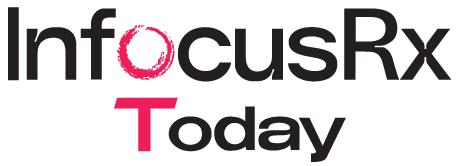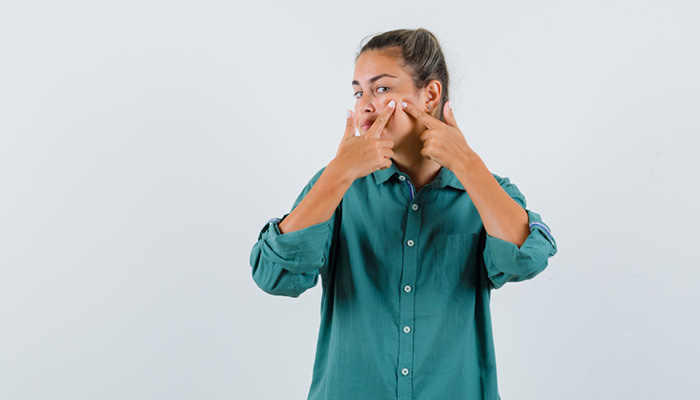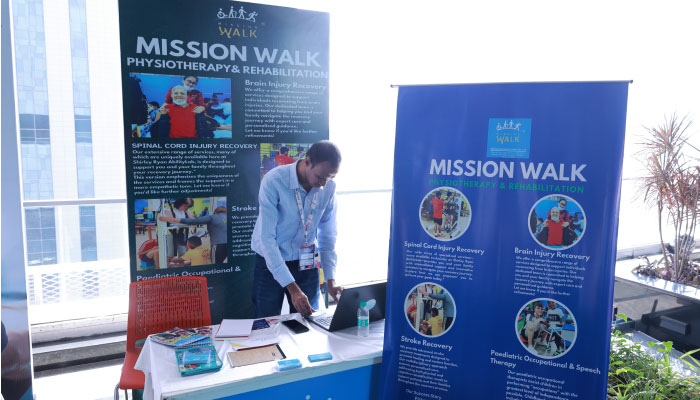A 16-year-old girl was apprehensive about attending the weekend get-together party. She was desperately trying to come up with some excuse to stay home. She had been avoiding social gatherings for a while now, and the reason was her acne. Her acne made her feel unattractive and her only concern was how to get rid of it. Acne, or pimples, is one of the most common irritating skin conditions that most adolescents experience.
About acne
The skin is composed of sebaceous (oil) glands that secrete sebum to maintain the lubrication of the skin and the hair. These glands are typically situated near the hair follicle. The oil or sebum can accumulate with dead skin cells, which can cause the hair follicle to become clogged. Bacteria can then act on the clogged hair follicle, resulting in acne, which is more common in adolescents due to the increased secretion of sebum during this time.
Acne is a condition that occurs in the areas of the body where the sebaceous glands are located, such as the face, throat, chest, shoulders, and back. Acne can manifest in various forms, including comedones (blackheads/whiteheads), papules, nodules, pustules, and cysts. Comedones are caused by the accumulation of oil and dead skin cells in the hair follicle surface. When they come in contact with air, they turn black and are known as blackheads. When the follicle is closed and skin-colored, they are called white heads. Papules are when the hair follicle becomes infected, swells up and appears red in color. If a red painful bump has white pus at the tip, it is referred to as a pustula. Solid, painful lumps known as nodules are formed when oily secretions accumulate in the hair follicles. Cystic acne is a type of acne characterized by pus-filled, infectious boils that can lead to scarring on the facial area.
Risk factors
Acne can be exacerbated by hormonal changes in the body. These changes are most commonly observed in female adolescents, occurring two to seven days prior to menstruation, due to medications such as cortisone, and during pregnancy. Other risk factors for developing acne include family history of acne, immune system issues, cosmetics applied to the skin, exposure to oily substances, and friction caused on the skin due to backpack, tight collar, cell phone, or helmet wear.
Treatment
The goal of acne treatment is to reduce inflammation, fight bacterial infection, stimulate new skin growth, and reduce sebaceous gland oil production.
Topical acne lotions containing salicylic acid, sulfur, resorcinol, and benzoyl peroxide is applied on mild acne to combat bacterial infection, shed dead skin cells, and dry up the oil. However, the application of these treatments can lead to side effects such as dryness, skin flaking, and skin irritation, which typically resolve after one month of treatment. If these treatments do not work, more potent topical applications are suggested containing ingredients such as benzoyl, peroxide, clindamycin, erythromycin, etc.
Oral antibiotics are prescribed to reduce the severity of severe acne cases. However, these antibiotics must gradually decrease as the bacteria become resistant to them. Common side effects of oral antibiotics include skin sensitivity to sunlight, discoloration, upset stomach, dizziness, etc. For cystic acne causing scarring, isotretinoin may be prescribed to treat the condition. However, this drug requires close attention from the dermatologist due to its potential side effects, such as nose bleeds, dry eyes, dry lips and nose, accompanied by itching, depression, etc.
Other treatments available for acne include oral contraceptive use in women, light and laser treatments, chemical peeling, collagen or fat filling of acne scars, dermabrasion (removal of the top layer of the skin with a rotating brush), and skin surgery (surgical removal of acne scars).
Self-care measures
It is possible to prevent or reduce the occurrence of acne by adhering to certain self-care guidelines.
- Wash the affected area twice daily with oil-free soap or a specific acne prevention soap.
- Avoid picking and squeezing the acne.
- Avoid heavy makeup.
- Remove all makeup before bedtime as it obstructs the opening of the hair follicle.
- Shower after strenuous physical activity as sweat and oil can clog the hair follicle openings.
- Wear loose-fitting clothes.
Stop worrying
Acne should never be a constant source of self-doubt and self-hatred for teenagers. It’s a natural part of growing up, and every teen has experienced it at some point or another. With proper self-care and proper treatment, acne can be avoided.



